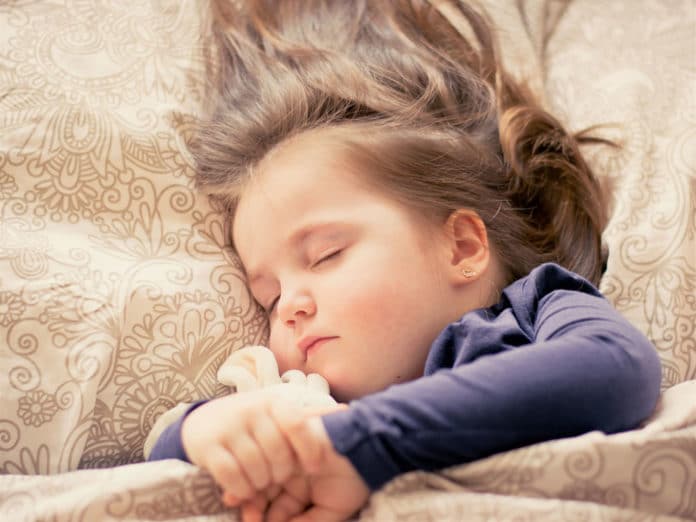Light at night in adults suppresses melatonin, a hormone primarily released by the pineal gland at night, and has long been associated with controlling the sleep-wake cycle. In children, bright light of a single intensity before bedtime has a robust melatonin suppressing effect.
However, it remains elusive whether evening light of different intensities is related to melatonin suppression in young children.
A new study by CU Boulder shed light on this, suggesting that preschoolers are highly susceptible to the physiological impacts of light at night. Even slight exposure to sunlight can prompt melatonin to plummet in preschoolers in the hour before bedtime, disrupting slumber long after the light goes out.
First author Lauren Hartstein, a postdoctoral fellow in the Sleep and Development Lab at CU Boulder, said, “Our previous work showed that one, fairly high intensity of bright light before bedtime dampens melatonin levels by about 90% in young children. With this study, we were very surprised to find high melatonin suppression across all intensities of light, even dim ones.”
Light influences circadian rhythms. When light hits the retina, a signal transmits to a part of the brain called the suprachiasmatic nucleus, which coordinates rhythms throughout the body, including nightly production of melatonin. If this exposure happens in the evening as melatonin is naturally increasing, it can slow or halt it, delaying the body’s ability to transition into biological nighttime.
Children have larger pupils. Their lenses are more transparent than adults hence light streams into them more freely.
Senior author Monique LeBourgeois, an associate professor of Integrative Physiology and one of the few researchers in the world to study the circadian biology of young children, said, “Kids are not just little adults. This heightened sensitivity to light may make them even more susceptible to dysregulation of sleep and the circadian system.”
The study involved 36 healthy children, ages 3 to 5 years, for a nine-day protocol. Children wore a wrist monitor that tracked their sleep and light exposure during the study. For seven days, parents kept the children on a stable sleep schedule to normalize their body clocks and settle them into a pattern in which their melatonin levels rose at about the same time each evening.
On the eighth day, scientists transformed the children’s home into what they playfully described as a “cave”—with black plastic on the windows and lights dimmed—and took saliva samples every half hour starting in the early afternoon until after bedtime. This enabled the scientists to get a baseline of when the children’s biological night naturally began and their melatonin levels.
On the last day of the study, children were asked to play games on a light table the hour before bedtime. The light intensity varied between children, ranging from 5 lux to 5,000 lux.
Compared to the previous night with minimal light, melatonin was suppressed anywhere from 70% to 99% after light exposure. The melatonin fell an average of 78% even in response to light measured at 5 to 40 lux.
And even 50 minutes after the light extinguished, melatonin did not rebound in most children tested.
Hartstein said, “Together, our findings indicate that in preschool-aged children, exposure to light before bedtime, even at low intensities, results in robust and sustained melatonin suppression.”
The study asks parents to shut off the gadgets and keep light to a minimum to foster good sleep habits in their kids.
Journal Reference:
- Lauren E Hartstein et al. High sensitivity of melatonin suppression response to evening light in preschool-aged children. DOI: 10.1111/jpi.12780
